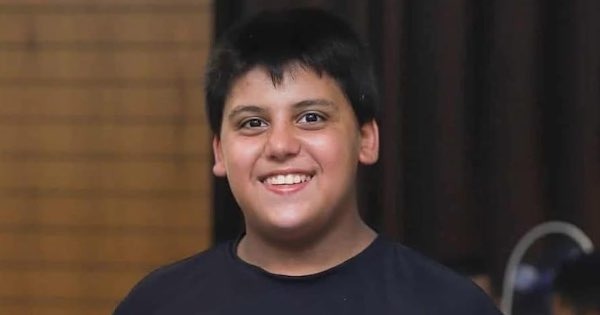The death of 13-year-old Aysam (Issam) Jihad Naser, a Palestinian boy from the West Bank village of Beita, has become a defining moment in a year marked by unprecedented violence, intensifying settler attacks, and a shifting global perception of Israel’s conduct in the occupied territories.
Aysam died on 11 November 2025, one month after Israeli soldiers fired multiple tear gas canisters at families harvesting olives. Witnesses told Haaretz that soldiers “threw gas in every direction” without provocation and then blocked medics for 10–15 crucial minutes as the boy convulsed and suffocated. DCIP reports that when the ambulance finally evacuated him, soldiers detained it again, interrogating the driver before allowing him to continue.
He never regained consciousness.
Aysam’s death joins the long list of Palestinian children killed this year in the West Bank. According to DCIP, Israeli forces and settlers have killed 47 Palestinian children in the West Bank in 2025.
But the reaction to this particular child’s death has become part of a wider transformation—one that reaches beyond Beita, beyond the West Bank, and even beyond the borders of Israel and Palestine.
A Shifting Narrative: ‘The Walls of the Prison Are Falling’
Aysam’s death arrives at a moment when the Israeli government is struggling to maintain the narrative frameworks that once insulated it from global scrutiny.
Across the Arab world, Europe, South America, and increasingly within the United States, Israel’s political and military explanations no longer command the same automatic acceptance they enjoyed for decades. Social media restrictions, algorithmic manipulation, and a short-lived “ceasefire narrative fog” have failed to contain public awareness of what is unfolding on the ground.
Alon Mizrahi describes this moment as one in which the Israeli “blindfold” is slipping—its attempt to conceal the breaking of the ceasefire, its continued assaults in Gaza and the West Bank, and its obstruction of humanitarian access.
“They tried to blind us with this fake ceasefire. But the blindfold is slipping. They can censor videos, block accounts, threaten journalists—whatever. But you can’t silence a billion people.”
According to Mizrahi, Israel expected the ceasefire announcement to buy time, defuse global outrage, and create confusion. For several weeks, he says, people across the world were unsure:
Is the war over? Is the genocide ending? Are Palestinians safe now?
This uncertainty muted the global protest movement just long enough for Israel to continue military actions on the ground while claiming diplomatic progress.
But that window has closed.
“People see what’s happening. The walls of this prison are down. Israel can’t manufacture reality anymore.”
The widespread documentation of settler attacks, the deaths of children like Aysam, and revelations of systemic abuses have punctured what Mizrahi calls the “Zionist dreamscape”—a curated reality in which Israel’s actions could be endlessly justified or obscured.
“How can anyone explain gassing a child to death? There is no story strong enough to hide this anymore.”
The collapse of Israel’s narrative is now central to the political landscape, shaping diplomatic relations, public opinion, and resistance movements across the region.
‘It Hit Me Hard’: The Personal Grief Behind the Politics
The child’s death deeply affected Alon Mizrahi, a 53-year-old Israeli Jewish–Palestinian author, activist, and former professional footballer. Mizrahi—whose father is an Arab Jew—played for Maccabi Haifa, Maccabi Tel Aviv, Hapoel Tel Aviv, Hapoel Be’er Sheva, Beitar Jerusalem, and France’s OGC Nice.
He grew up “as an ordinary Israeli in a working-class small town in northern Israel,” he says, attending Israeli schools before joining the army at 18.
Reacting to the boy’s death, Mizrahi said he broke down upon seeing the child’s photograph:
“He looked like such a beautiful, smiling kid. It really hit me hard… This is the kind of evil I am fighting.”
He said the image brought back memories of failed political movements and the illusion that change from within the system was possible.
“We must never forget real Palestine… the actual people, the actual children.”
Escalating Violence: Settler Attacks Reach Historic Highs
The environment into which Aysam’s death fits is one of intensifying settler violence across the West Bank.
United Nations data shows:
- 264 settler attacks in October 2025 — the highest ever recorded.
- More than 1,500 settler attacks in 2025, around 15% of all documented incidents since 2006.
- At least 964 Palestinians killed in the West Bank by settlers or Israeli forces since October 2023.
- More than 3,200 Palestinians displaced since October 2023, including over 1,600 children.
UN officials warn that settler attacks are now “daily, organised, and systematically protected by the Israeli military.”
Families in Beita said they feared violence during olive season each year, but never imagined a child would be fatally gassed while running from soldiers.
Mass Arrests: A Second Layer of Control
Israel’s escalation of force has also taken the form of mass arrests and widespread administrative detention:
- Nearly 14,500 Palestinians detained from the West Bank since 7 October 2023.
- As of mid-2025, Israel holds 10,550 Palestinian prisoners, including 3,563 administrative detainees held with no charges or trial.
- At least 98 Palestinians have died in Israeli custody since October 2023.
Human rights groups say the arrest campaign amounts to a system of coercion and domination, designed to crush Palestinian civil life. The military’s obstruction of medical care for Aysam—first blocking paramedics, then detaining an ambulance—is part of this pattern.
A Family’s Grief and a Region in Flux
In Beita, relatives described Aysam as a gentle boy who “loved the olive trees.” His family says they will continue harvesting the grove next year in his honour.
But Aysam’s story now resonates far beyond his village.
It encapsulates the broader struggle unfolding across the region: the collapse of Israel’s long-protected narrative, the exposure of systemic violence in the West Bank, and a growing refusal—both globally and regionally—to look away.
As Mizrahi put it:
“People know what’s happening now. And once doubt spreads, it’s over for them.”
The death of a 13-year-old boy is not only a heartbreaking tragedy—it is a sign of a historical turning point.

